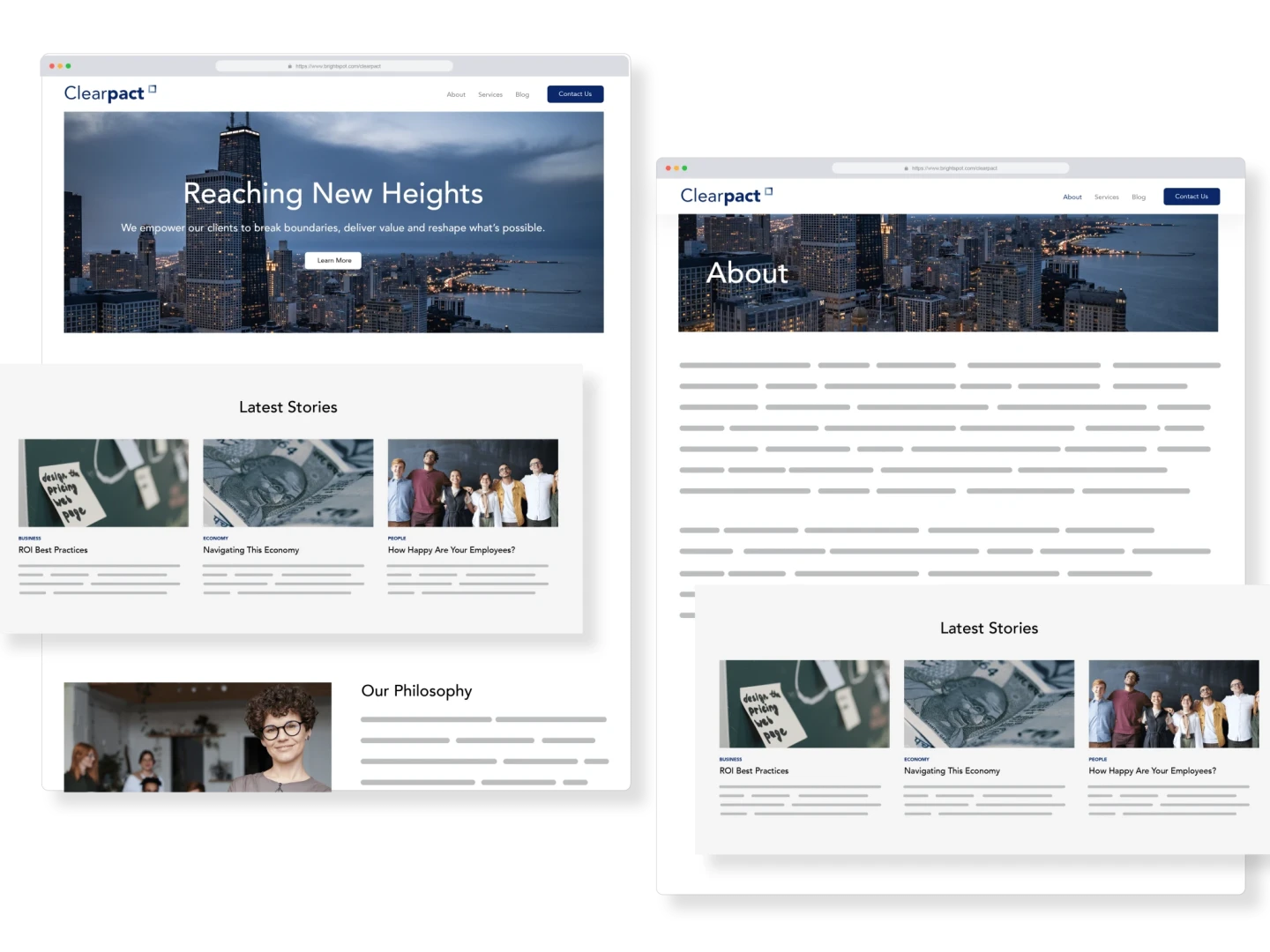Today’s digital-content ecosystem feeds a proliferation of devices and channels where end users engage with the information that content producers create.
When it comes to marketing teams, their role is to position the brand or messaging in all the spaces where these users go — whether it’s the smartphone in their pocket, the smartwatch on their wrist, or even the video screen that flickers for 30 seconds as they pump gas into their car at the local gas station.
Robust content-management systems (CMS) like Brightspot bring a “create-once, publish-everywhere” simplicity to the production equation. From here, an emphasis on modular content — essentially atomizing your content into many reusable parts — amplifies reach across channels and beyond monolithic silos.
Global marketing teams, in particular, stand to gain through this approach by realizing significant cost savings, brand and messaging consistency and maximum impact for their marketing dollars.
In today’s content management networks, these types of use cases are endless, but the pattern remains consistent: Content should now be authored from the outset with the intent of making it highly modular so that it can be reconfigured or reflowed to almost any needed touchpoint automatically, with as little manual adjustment or tweaking as possible.
Modular content explodes content silos
Technology expert Dion Hinchcliffe has described the evolution of the modern CMS as moving from that of a central content repository to “a spoke on a hub” that connects the authoring endpoint, third-party integrations and the myriad channels driving the end-user experience.
The power of modular content in this hub-and-spoke scenario is that content can flow anywhere — and back — without disrupting the chain of custody, approvals and versioning for any given content element.
Why does this matter for marketing teams?
Take, for example, the case of a pharmaceutical company bringing a groundbreaking new drug to market around the world.
With millions of dollars of investment on the line and a web of complex regulatory and legal requirements specific to various countries and regions, consistent and accurate messaging for each and every word is paramount.
All claims must be substantiated and referenced; appropriate legal and medical disclaimers must be vetted and attached. With approvals secured through detailed medical and legal review workflows for an approved drug, finalized messaging can now be passed to the marketing teams whose job it is to get the word out and bring the product to market for local patients and medical providers.
Here, a modular content approach can unlock the true potential of a global marketing team, which can confidently pick up an approved set of messaging that can be fed into local marketing channels like Web, email, print, broadcast and beyond. The messaging can be tailored and translated for local markets while never losing its connection to the approved source asset.
Beyond enabling local teams to work seamlessly without being blocked by or stepping into larger global workflows, the availability of multiple, configurable modules means messaging and impact can be measured and applied at the local level to ensure maximum impact and ROI.
Whether it’s a life-saving drug, a new techno gadget or details about the luxury attributes of a new car, a modular content approach lets global brands drive one single message but speak in many voices to mirror the language and tone of the respective local audiences.
Modular content is system-agnostic
Think of modular content as building blocks that power a dynamic content ecosystem. The assembly lines carrying these blocks are no longer restricted within the walls of one proprietary system versus another.
APIs can take any piece of content, or collection of content assets, out of an authoring system like a CMS and deliver it to a front-end presentation layer — or a completely separate CMS, digital asset management system or CRM tool.
The key is being able to logically deconstruct your blocks in order to map directly over to a target location at the other end of the proverbial delivery highway.
The beauty of modular content, therefore, is that it can be applied to any template, media, form or format.
Marketers familiar with working across proprietary and third-party systems take note. With modular content, you can bring the items you need down the spokes referenced by Dion Hinchliffe, and you won’t have to second-guess the source or disrupt processes in your own workflow.
The benefits are clear: time-saving efficiencies, messaging consistency, and autonomy for marketers to make informed decisions at the local market level.
Modular content saves time and money
Speaking of efficiencies, the most immediate and apparent benefit from modular content is its reusability. Why create multiple versions of the same thing when a shared module can achieve the same result and cut out the time to recreate and customize?
Beyond the clear time savings, perhaps the bigger but less obvious win is the ways a modular content framework lets you easily track where individual components are being used, where they are succeeding and where certain modules are underperforming.
This analytic intelligence is gold for marketers, who can now create programs and modules at a global level and gain a view across the board about what’s working and what’s not — and make the necessary course corrections to avoid spending money in areas where the data is telling them not to.
Knowing where and how your content is being used at the granular level also means avoiding overusing certain assets like images or being able to more easily inject, manage and update key messaging as you need.
Modular content simplifies version control
Technical and marketing audiences typically sit at opposite ends of the spectrum but, in the case of modular content, the language of technology can greatly simplify the benefits it offers to marketers.
Consider versioning. The importance of version control is central to computer programming.
How does this tie to modular content?
Take your digital assets like images and videos, for example.
The whole concept of a digital-asset management solution (DAM) is to provide a centralized storehouse for all the building blocks of your digital footprint. Think, the original folder-and-file structure of Windows Explorer to today’s cloud-based offerings from the likes of Dropbox, Box or Google Drive.
Ubiquitous in marketing teams for collaboration and creation, the challenge here can be that anything taken out of these DAMs immediately loses its relationship and context to the source asset.
Placed in an email campaign in a separate CRM or published to a web page through a CMS, a standalone asset is no longer referenceable outside of its new location.
However, there are many cases when a published asset will need to be modified. For example, a legal claim requires that all visual references to a person or product be removed. For one asset published across hundreds of product pages or websites, you could be looking at countless hours to track and fix this situation.
Now consider this same use case from the perspective of modular content. Your image asset has been sourced via your DAM into your chosen presentation module. A reference exists to the source file, which can be updated at its source, and the changes can be fed back out to wherever it is available and accessible.
This same principle can be applied to a document authored and approved somewhere like Google Drive. Perhaps this is the annual CEO letter to shareholders, which is then published by the corporate marketing team through a CMS for consumption online. This asset now lives in two places, but with a well-implemented modular content strategy, there is no longer any need to have multiple versions of each.
Changes at the local source can flow across to the CMS version, and vice versa. Any document can comprise multiple modules or be a single module made up of a series of nested modules. In this scenario, a team can edit and approve all content from one place, and these changes flow downstream through the spokes of a modular content implementation.
How Brightspot approaches modular content
Brightspot was built from the beginning to support a modular content approach. This starts with an internal approach that considers all assets within the CMS — text, images, videos, even modules — as shareable, reusable building blocks.
Taken a step further, Brightspot’s API-first approach extends to provide connectivity across platforms. Publisher-informed and publisher-focused, Brightspot has successfully implemented several modular content approaches for our customers, from seminaries and institutes, global consultancy firms, news media publishers, and life sciences organizations. If your company needs a way to capitalize on content reuse to fit the right content into the right place, no matter the interface, Brightspot has the tools to help you get there.









